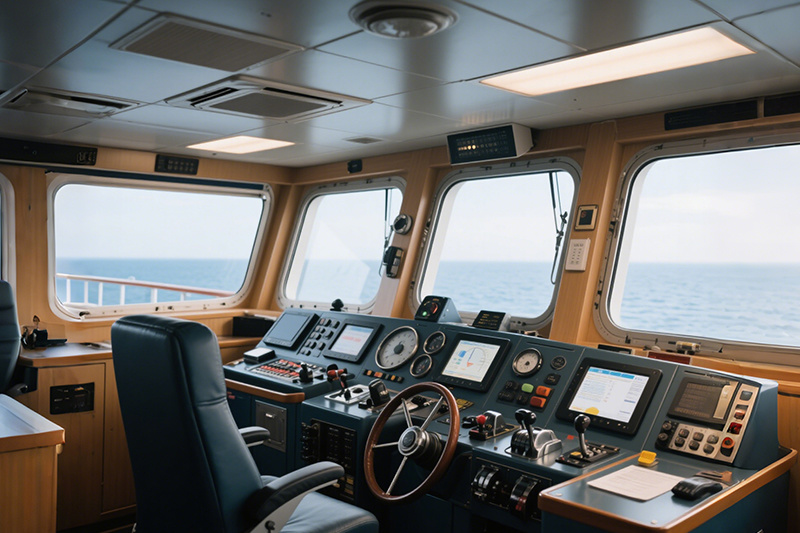Shipbuilding Tempered Glass: The Ultimate Solution for Coastal Construction
Jul 29,2025

Shipbuilding Tempered Glass: The Ultimate Solution for Coastal Construction
In the rapidly evolving field of construction, especially along coastal areas, the materials we choose play a critical role in ensuring durability and safety. Among these materials, shipbuilding tempered glass stands out as a revolutionary solution. This article explores the myriad benefits of using shipbuilding tempered glass in coastal construction, shedding light on its unique properties, applications, and the overall value it brings to maritime environments.
Table of Contents
- 1. Introduction to Shipbuilding Tempered Glass
- 2. What is Tempered Glass?
- 3. Advantages of Using Shipbuilding Tempered Glass
- 4. Applications of Shipbuilding Tempered Glass in Coastal Construction
- 5. The Manufacturing Process of Shipbuilding Tempered Glass
- 6. Safety and Regulatory Standards for Shipbuilding Tempered Glass
- 7. Environmental Considerations
- 8. Future Trends in Shipbuilding Tempered Glass
- 9. Conclusion
- 10. FAQs about Shipbuilding Tempered Glass
1. Introduction to Shipbuilding Tempered Glass
Coastal construction presents unique challenges, from exposure to harsh weather conditions to the need for sustainable materials that can withstand saltwater and high winds. Shipbuilding tempered glass, specifically designed for marine environments, offers a multifaceted solution. This type of glass is engineered to endure extreme conditions, making it an ideal choice for a variety of applications in coastal settings.
2. What is Tempered Glass?
Tempered glass, also known as toughened glass, is a type of safety glass that has been treated by controlled thermal or chemical processes to increase its strength compared to normal glass. The manufacturing process involves heating the glass to high temperatures and then rapidly cooling it, which alters its internal structure. This process not only enhances its strength but also makes it more resistant to thermal stress and impact.
The Characteristics of Tempered Glass
Some key characteristics of tempered glass include:
- Strength: Up to five times stronger than standard glass.
- Thermal Resistance: Can withstand sudden temperature changes.
- Safety: Breaks into small, blunt pieces instead of sharp shards.
- Clarity: Provides excellent visibility and aesthetics.
3. Advantages of Using Shipbuilding Tempered Glass
The advantages of shipbuilding tempered glass are numerous, particularly in the context of coastal construction:
Enhanced Safety and Durability
Safety is paramount in coastal construction, and tempered glass significantly mitigates risks associated with structural failures. Its ability to withstand impacts and severe weather conditions makes it a reliable choice for windows, facades, and skylights in coastal buildings.
UV Protection
Shipbuilding tempered glass often comes with UV filtering capabilities, protecting interior furnishings and occupants from harmful solar radiation while maintaining natural light.
Energy Efficiency
With advancements in coating technologies, tempered glass can contribute to energy efficiency by reducing heat gain and loss. This is particularly beneficial in coastal regions where temperature fluctuations can be significant.
Aesthetic Versatility
Available in various thicknesses and finishes, shipbuilding tempered glass can be customized to fit diverse architectural designs, thereby enhancing the aesthetic appeal of coastal buildings.
4. Applications of Shipbuilding Tempered Glass in Coastal Construction
The versatility of shipbuilding tempered glass allows it to be utilized in a wide range of coastal construction applications:
Windows and Facades
Its strength and safety features make it an excellent material for windows and building facades, enabling unobstructed views while providing protection against harsh coastal elements.
Balconies and Railings
Tempered glass is increasingly used in balcony railings due to its ability to enhance safety without obstructing views, providing both functionality and elegance.
Shower Enclosures
In coastal homes, tempered glass shower enclosures offer a sleek, modern appearance while ensuring safety and durability against moisture.
Glass Doors
Whether sliding or pivoting, glass doors made from tempered glass are a popular choice in coastal construction for their aesthetic appeal and safety features.
5. The Manufacturing Process of Shipbuilding Tempered Glass
The manufacturing process of shipbuilding tempered glass is crucial to its performance characteristics. Here's a breakdown of the steps involved:
1. Cutting
The process begins with cutting large sheets of glass into the desired shapes and sizes, tailored for specific applications.
2. Polishing Edges
Once cut, the edges of the glass are polished to prevent sharp edges that could cause injuries.
3. Heating
The glass is then heated in a furnace to temperatures exceeding 600 degrees Celsius, allowing it to undergo a transformation in its internal structure.
4. Rapid Cooling
After heating, the glass is rapidly cooled using air jets, which solidifies its structure and enhances strength.
5. Quality Control
Finally, the tempered glass undergoes rigorous quality control checks to ensure it meets safety and performance standards before being shipped for installation.
6. Safety and Regulatory Standards for Shipbuilding Tempered Glass
Compliance with safety and regulatory standards is vital in the construction industry. Shipbuilding tempered glass must adhere to the following standards:
1. ASTM Standards
In the United States, ASTM International provides standards that specifically address the performance and safety of tempered glass.
2. ANSI Z97.1
This standard establishes criteria for the safety and performance of glass used in buildings, ensuring that tempered glass can withstand impacts and thermal stresses.
3. ISO Standards
International standards set forth by the International Organization for Standardization (ISO) provide guidelines for the manufacturing and testing of tempered glass, ensuring global compliance.
7. Environmental Considerations
As sustainability becomes increasingly important in construction, shipbuilding tempered glass offers several environmental benefits:
Recyclability
Tempered glass is 100% recyclable, reducing waste and promoting sustainability in coastal construction projects.
Reduced Energy Consumption
By enhancing energy efficiency, tempered glass helps reduce the overall carbon footprint of buildings, aligning with global sustainability goals.
8. Future Trends in Shipbuilding Tempered Glass
The future of shipbuilding tempered glass is bright, with several trends emerging:
Smart Glass Technology
Innovations in smart glass technology are paving the way for windows that can change their properties based on external conditions. This technology will further enhance energy efficiency and comfort in coastal buildings.
Integration with Renewable Energy
Future designs may incorporate photovoltaic cells into tempered glass, allowing buildings to generate their own energy while maintaining aesthetic values.
9. Conclusion
In conclusion, shipbuilding tempered glass emerges as the perfect solution for coastal construction, offering unmatched strength, safety, and aesthetic versatility. Its unique properties make it suitable for various applications, from windows to railings. As the construction industry increasingly embraces sustainability, tempered glass stands at the forefront, promising a resilient and eco-friendly future for coastal communities.
10. FAQs about Shipbuilding Tempered Glass
1. What distinguishes shipbuilding tempered glass from regular tempered glass?
Shipbuilding tempered glass is specifically designed to withstand coastal conditions, including saltwater exposure, UV radiation, and high winds, making it more suitable for maritime environments.
2. Is shipbuilding tempered glass safe for use in residential buildings?
Yes, shipbuilding tempered glass is designed with safety in mind, breaking into small, blunt pieces rather than sharp shards, making it safer for residential use.
3. Can shipbuilding tempered glass be used in extreme weather conditions?
Absolutely! It is engineered to resist extreme weather, including heavy winds, rain, and temperature fluctuations, making it ideal for coastal construction.
4. How does the energy efficiency of shipbuilding tempered glass compare to traditional glass?
Shipbuilding tempered glass often possesses enhanced energy efficiency features, helping to reduce heat gain and loss compared to traditional glass, which can be particularly beneficial in coastal climates.
5. What maintenance is required for shipbuilding tempered glass?
Routine cleaning with non-abrasive materials is typically sufficient to maintain its clarity and appearance. Regular inspections for damage or wear are also recommended.
PREVIOUS:
Contact Us
E-mail: admin@jingtaibl.com
TEL: +86 18969476297 / +86 18067898952
Address: No.56, No.2 Donggang Road, Quzhou, Zhejiang Province






